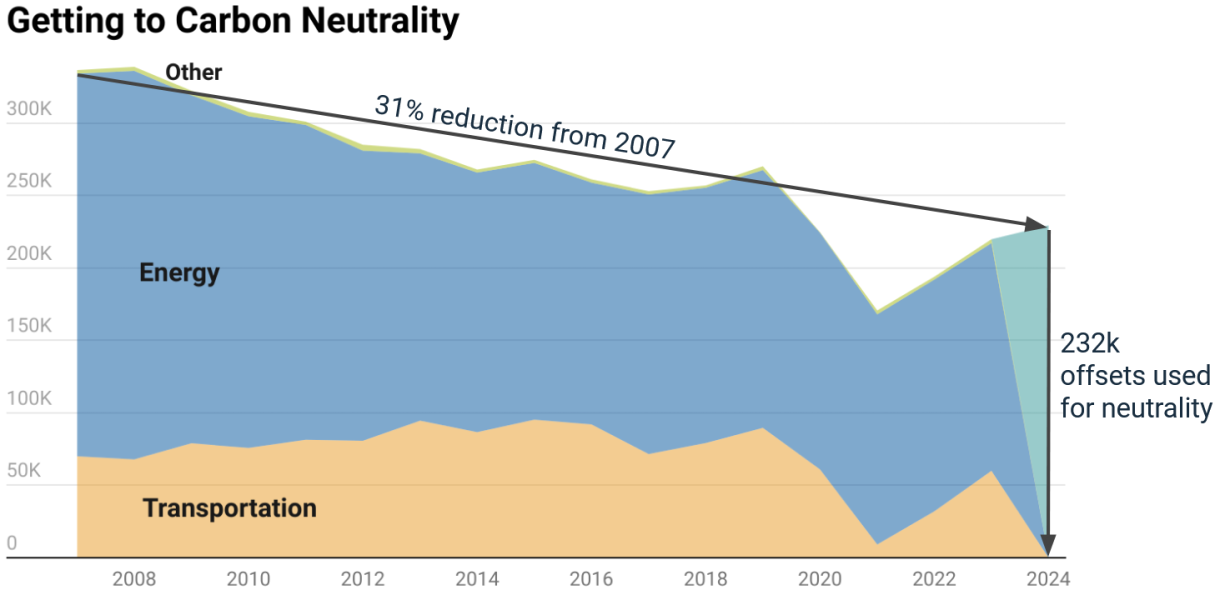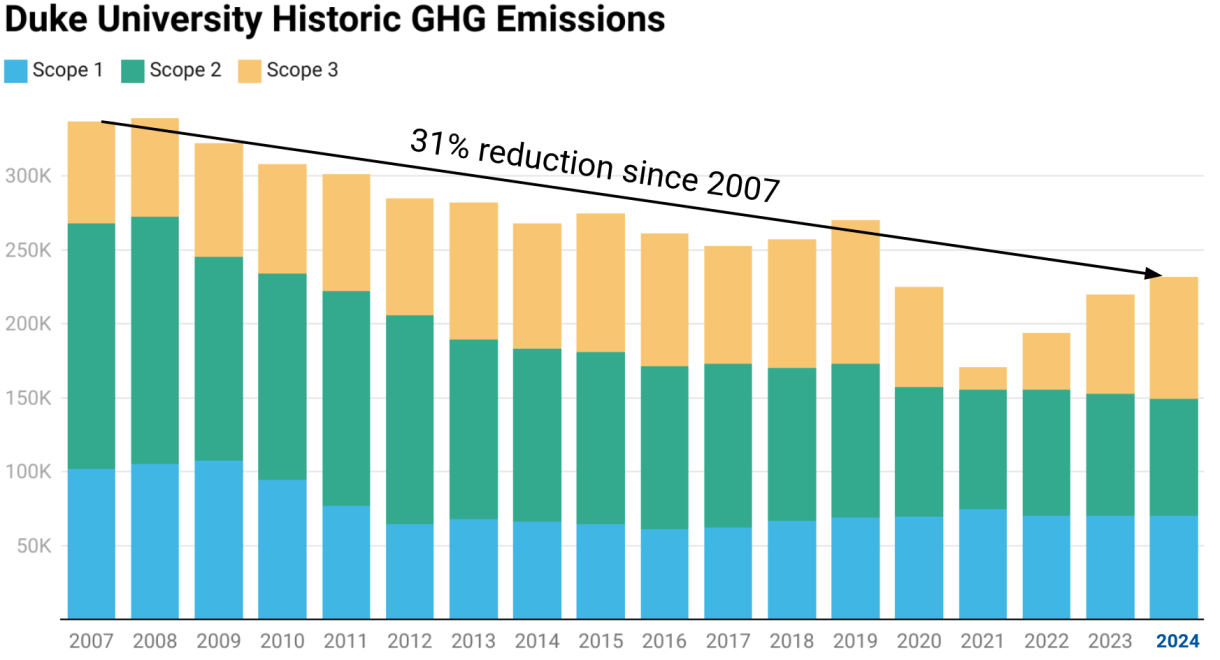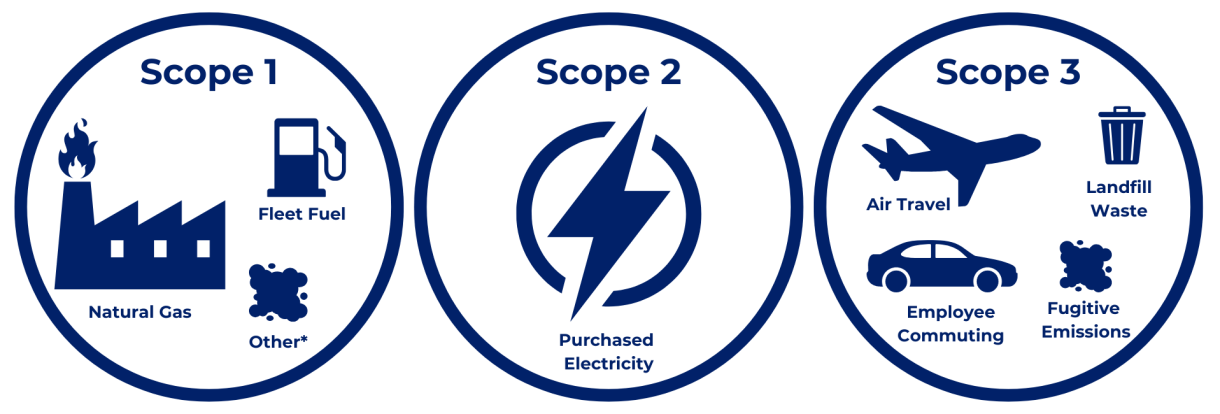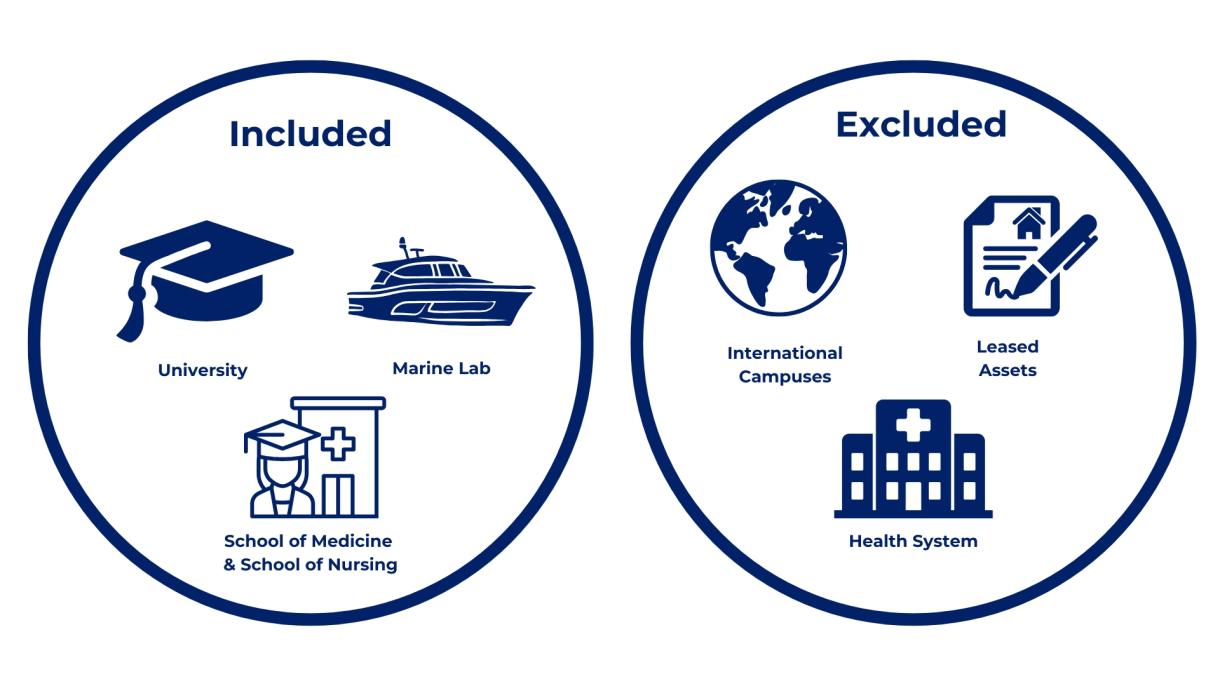
Fiscal Year 2024 Update
In FY24, Duke university met its 2024 carbon neutrality goal by continuous on-campus emissions reductions and the procurement of high-quality carbon offsets. Duke is already assessing projected emissions beyond 2024 to identify even greater internal campus reductions and further renewable energy investments. Duke University is the first large research university on the east coast to reach carbon neutrality and will continue to serve as a leader as other universities near their goals.

Since Duke’s 2007 baseline year, the university has reduced its overall greenhouse gas (GHG) emissions by 31%. These emissions reductions have been achieved despite significant campus growth, with Duke’s square footage increasing by 27% and population growing by 24% during the same time period. Emissions have been reduced through a combination of the discontinuation of the use of coal on campus, significant increases in building and utility plant efficiency, and commuting reductions. Additional emission reductions are planned through Duke’s investment in off-site solar energy and on-campus infrastructure projects such as steam-to-hot-water conversions and installing heat recovery chillers.
Despite the long-term emissions reduction trend, Duke’s emissions in 2024 rose approximately 6% compared to 2023 as the emissions suppressed by the COVID-19 pandemic continued to rebound. This recent increase was largely driven by a rise in employee commuting emissions. Duke University’s energy-related emissions are continuing to decrease year-over-year and have decreased by 42% since the 2007 baseline year.

To see a fuller update on fiscal year 2024's emissions, please view this slide deck.
Greenhouse Gas Emissions Boundary
When Duke signed the American College and University Presidents’ Climate Commitment in 2007, the University committed to set a carbon neutrality target for various emission-generating activities. The CAP categorized Duke University’s overall emissions in three distinct scopes (outlined in the figure below) to address the unique attributes and extent of each.

Duke's Geographic Boundary
In addition to an emissions source boundary, Duke also has to define a geographic boundary for its GHG emissions accounting. Both the 2009 and 2019 Climate Action Plans identified targets for entities that the university directly owns and operates. These plans outlined emission reduction strategies for the University, including the School of Medicine, the School of Nursing, and Duke’s Marine Lab.

